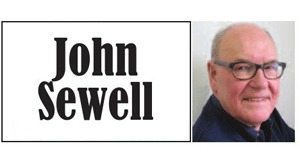John Sewell –
 Whoever you supported for mayor and council, you’ll be interested in the shape and complexion of the new city council. And it would be very difficult to say that it is a fair representation of those who live in this city.
Whoever you supported for mayor and council, you’ll be interested in the shape and complexion of the new city council. And it would be very difficult to say that it is a fair representation of those who live in this city.
Of the 45 members of council, 31 are men and 14 are women. To fairly represent the gender split in the city, 23 should be women and 22 men.
And 39 can be identified as having white skin. Only five are people of colour: one Black, four of Chinese descent. To fairly represent the city, at least 17 should be people of colour.
The median age of Toronto residents is about 39 years; that is, 50% are older than 39 and 50% are younger. Councillors rarely give their age, but as far as I can tell (and I stand to be corrected), only three councillors, Joe Cressy, Mike Layton and Christin Carmichael Greb are younger than 39. To fairly represent those between 18 years (voting age) and the median age, at least a dozen should be under 39.
Of the 38 councillors running for re-election, only one did not get re-elected: in Ward 26 in East York, Jon Burnside defeated John Parker. Generally poor performance does not mean defeat: 37 of the 38 councillors running for re-election were victorious—most capturing considerably more than half the vote—and no one would claim that all are strong and attentive.
The rule seems to be that incumbency almost always gives you an election victory no matter what your performance in the last four years.
Voting results in the former City of Toronto differ considerably from the results in the other two thirds of the current city that is Etobicoke, North, Scarborough. York and East York.
There are 16 councillors representing the former city, and all are somewhat or very progressive in their politics (that is, worried about issues of equity) save for two: Cesar Palacio and Christin Carmicheal Greb in Karen Stintz’s former ward. (Her father is a Harper Conservative MP and she had strong endorsements from that side of the political spectrum. Of those 16, 9 are women.
Among the 28 councillors representing the rest of the current city, just two can be considered progressive—John Filion and Shelley Carole. Only four are women.
Those who claim there is no political split between the older city and the suburbs aren’t looking very closely at the election choices made by residents, as expressed through their votes. Since the former city representatives are in a distinct minority on council, they will generally be out-voted by the more conservative majority from the suburbs.
It’s no fun to be from the older city. And whether the strong team elected here will have appropriate influence remains to be seen.
One factor to watch will be who the new mayor, John Tory, appoints to the executive committee and to chair council’s standing committees. Rob Ford turned to those who supported him personally, which often meant excluding those who could forge alliances with others and get things done.
There is a feeling that John Tory wants to find some middle ground on council; some basic harmony.
 That would be most easily accomplished by using the talents of the progressives on council. Tory’s main base of support was the former city of Toronto and North York—Doug Ford took Scarborough and most of Etobicoke, the places with the worst transit service, while Olivia Chow’s base was just two wards west of Downtown—so perhaps he will reach out to some of them.
That would be most easily accomplished by using the talents of the progressives on council. Tory’s main base of support was the former city of Toronto and North York—Doug Ford took Scarborough and most of Etobicoke, the places with the worst transit service, while Olivia Chow’s base was just two wards west of Downtown—so perhaps he will reach out to some of them.
Once again we have a city council that is mostly white, male and old. Those are characteristics which do not reflect what Toronto is all about. It is not clear what’s needed to get a city council that is more representative of the citizenry.
The current system rewards incumbents and discourages anyone from challenging them. It’s like our political system is stuck. Term limits anyone?
John Sewell is a former Mayor of Toronto
 TheBulletin.ca Journal of Downtown Toronto
TheBulletin.ca Journal of Downtown Toronto

